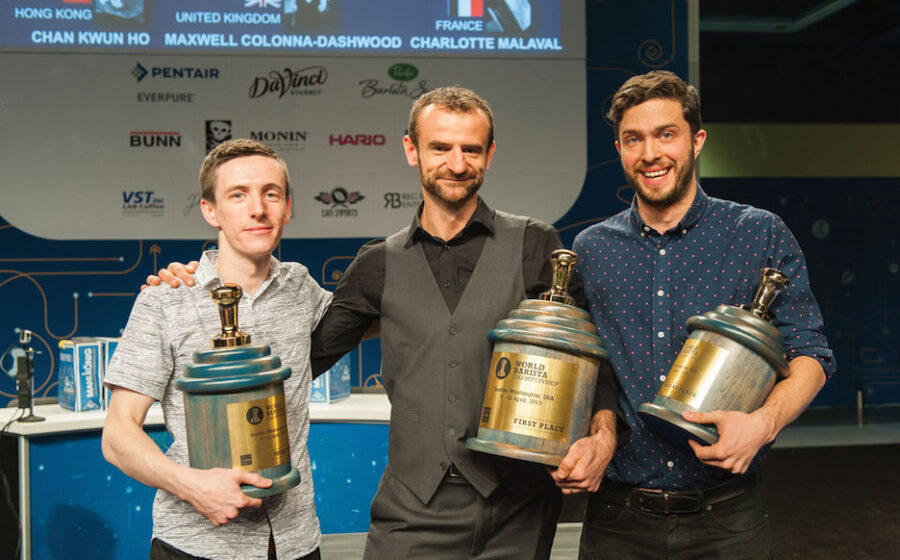[T]hroughout its history, the World Barista Championship has evolved at nearly the same rate as coffee. Alterations in the structure, scoring, and judging have been part of the competition from the start, so it’s not a shock that several changes were announced for the 2016 contest. However, the changes do mean the 2015 winner, Sasa Sestic of Australia, will be the last champion who had to make a cappuccino in competition.
To learn more about the changes and the thinking behind them, Fresh Cup talked with Stephen Morrissey, the 2008 champion and the chair of World Coffee Events’ competitions working group:
[T]he technical aspect of the competition, at least at the world level, is getting cut back a bit. There will be one technical judge instead of two.
“Whoever is successful year one with these new rules, obviously that will inform what happens, but those trends will come and go.”
A big force of this competition over the years has been education. It’s been promoting a set of standards for the world for what good coffee looks like and how the barista is the ambassador of that process. In the past there was far more weight added to those things. In part that was because there was a need for education. Nobody was doing the right things and we wanted to promote certain standards. We’ve had to keep adjusting that score sheet section over the years as we saw that more and more people knew what to do. All of the boxes were being checked.
At this level, everyone is doing great. We wanted to maintain it because if you take that technical score sheet and you went around to every café in the world, very, very few are following it.
Competitors in the past were able to use their own grinder. Why change that?
We’ve been looking at the disparity of resources available to some countries versus other countries just based off of economic status or how young their coffee culture is, and we wanted to make sure there was an even playing field.
We have partners, like Victoria-Arduino, like Mahlkönig, and we want to make sure that their investment of sponsoring this competition, of supporting this competition, that they got something, too. But it wasn’t so much creating an appetizing thing for a sponsor, it was more that we see a disparity an awful lot and wanted to make an even playing field.
The biggest change is that competitors can now choose what milk drink they make. They’re not limited to a cappuccino.
It was always a very Italian interpretation of what a milk drink should be. Perhaps it’s time we open up a little more to acknowledge the sheer variety of milk drinks.
Do you expect another drink to become dominant in competition?
The question we’ve asked ourselves is: how do we make this not a macchiato competition. To that, I will say I don’t love macchiatos. I don’t think they’re particularly balanced. I love a single-shot cappuccino. I adore that. I really hope to see an awful lot of them still. It’s going to make it more interesting to see if people can make a four-ounce drink, like a Gibraltar or a cortado. I like that option for diversity.
Trends will occur no matter what. Whoever is successful year one with these new rules, obviously that will inform what happens, but those trends will come and go.
There are more changes coming. There are so many coffee shops doing innovative things around the world and we don’t want the WBC format to be a rigid, antiquated thing. We want it to be something that is pliable and a platform that can showcase all that innovation.
—Cory Eldridge is Fresh Cup’s editor.
Photo: 2015 World Barista Champion Sasa Sestic (center) from Australia, with second-place winner Charles Babinski (right), and third-place winner Ben Put (left).















